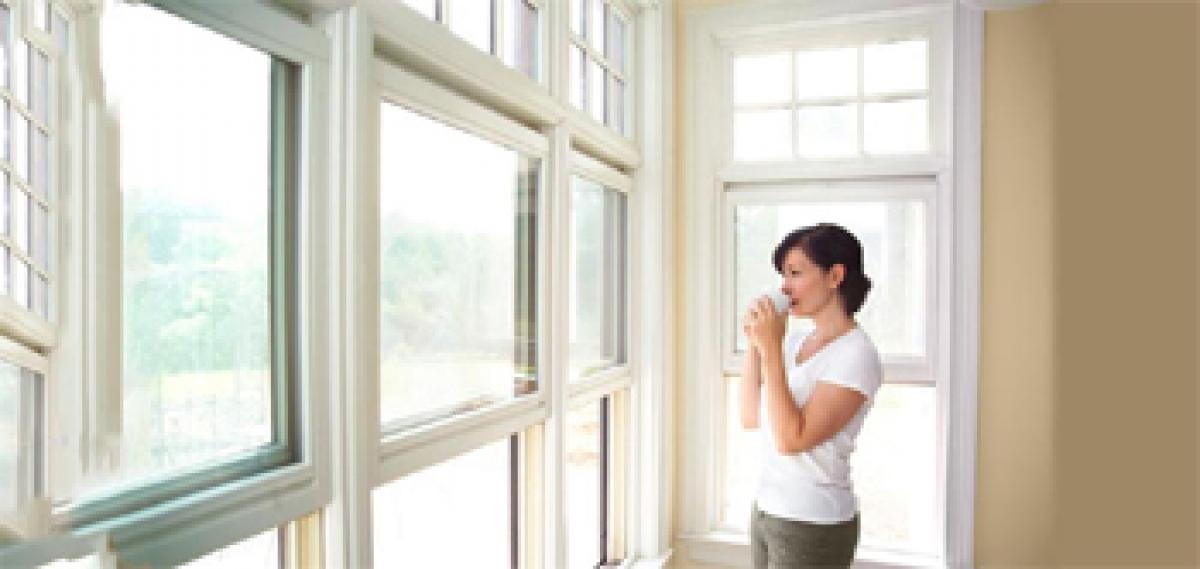Live
- G20 Leaders Will Talk About Climate, Taxes, and Trump's Return in Brazil
- COP29: CDRI announces $8 million funding for 12 projects to address climate crisis
- Anti-Telgu remarks: Actor Kasthuri Shankar moves court for bail
- Samsung AR Smart Glasses Set to Launch in 2025, Featuring Ray-Ban Meta-Like Design
- Kerala Industries Minister confident that new policy will boost plantation sector
- Madras HC plans inter-departmental monitoring committee to combat drug use in TN
- Bihar: Spotted deer dies due to heart attack in Banka district
- Mushtaq Ali T20: Shami to spearhead Bengal bowling attack, Gharami named captain
- Kharge's clarion call to oust Maharashtra's BJP-backed MahaYuti
- Why Ukraine’s Use of US Missiles Against Russia Could Lead to World War 3
Just In
Share of uPVC is expected to grow over 30% in both new and replacement sales: Ken Research


Whether designing a residential, commercial or institutional building, architects and owners carefully consider the qualities and long-term advantages of fenestration materials. Windows and doors provide essential protection and architectural character to a building and also adhere to various owner-driven requirements including aesthetics, cost, performance, maintenance and life cycle.
Whether designing a residential, commercial or institutional building, architects and owners carefully consider the qualities and long-term advantages of fenestration materials. Windows and doors provide essential protection and architectural character to a building and also adhere to various owner-driven requirements including aesthetics, cost, performance, maintenance and life cycle.
Earlier, windows and doors in residential and commercial constructions in India were merely looked at as apertures in the wall, and traditionally made of mild steel, wood or aluminum and simple float glass apart from some basic hardware such as handles, shoot-bolts, hinges, etc. However, windows have come a long way from being insignificant to being recognized as the single most important area in the envelope or shell of the building for preventing energy loss and providing in-habitat comfort. Wood as the mainstay for doors and windows is fast making way for uPVC frames in most of the new, big residential projects, a switch to an eco-friendly alternative that requires little maintenance too.
According to the Research Analyst, Ken Research uPVC doors and windows have several intangible benefits over their counterparts as they are fire, wind, and moisture resistant, aesthetic, long lasting, thermally and acoustically insulated, and can be customized according to individual requirements. It is a low thermal conductive material and is proved to prevent loss of energy by up to 30-35% and also prevents thermal bridging, thus avoiding condensation unlike aluminum. uPVC never rots, flakes, rusts, fades, pits, peels or corrodes. It needs only a light soapy wash and a check of the seals for maintenance.
Globally, the uPVC window and door system market share ranges from 60-80% in most countries while the predominant material of construction in India is still timber (in rural and in upper end constructions), mild steel (in low cost housing) and aluminum (in urban constructions). The Indian window and door market was around INR 13000 crore in year 2013-14 and the market share of uPVC windows and door profiles share was about 6-7%. However, growing awareness about the benefits of uPVC and demographic factors like rapid urbanization, growing concern about energy efficiency, regulatory changes and aging building stock in the country is expected to change the fortunes of the uPVC windows and doors market in the country.
A United Nations report suggests that the number of Indian citizens living in urban areas will reach 900 million by 2050 amounting to 55% of its population. Massive construction is underway to respond to this urbanization. It has been estimated that the total built space in India would increase five-fold from 2005 to 2030, and by then more than 60% of the commercial built space would be air-conditioned. Over the next 10-15 years, the share of uPVC is expected to grow over 30% in both new and replacement sales, majorly fueled by the large, high rise apartment projects in urban cities. according to the Research Analyst, Ken Research

© 2024 Hyderabad Media House Limited/The Hans India. All rights reserved. Powered by hocalwire.com






